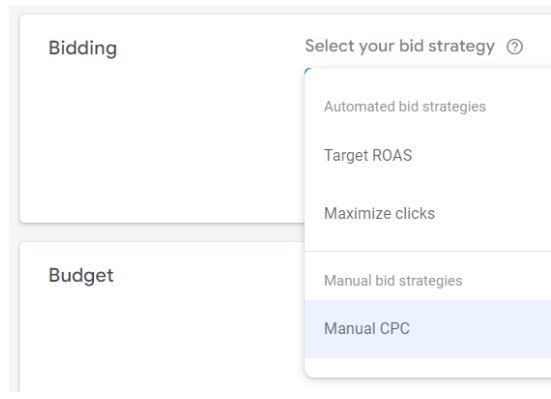This year marks the end of the road for Universal Analytics 360 as Google shifts its focus to Google Analytics 360 for paid users. This transition isn’t optional or something you can delay, and time is of the essence.
Moving forward, there’s a notable departure from the previous analytics framework, and migrating data between the two systems isn’t feasible, presenting a significant hurdle for organizations.
Given the necessity to essentially start anew, now is an opportune moment to explore alternative options and assess whether there are superior solutions tailored to your requirements.
Key factors to weigh include the migration process, privacy and compliance considerations, and the user-friendliness of the chosen platform, whether sticking with Google or opting for a different provider.
When Is Google Universal Analytics 360 Sunsetting?
Google Universal Analytics 360 Sunset Date: Google will no longer process data in Universal Analytics 360 properties after July 1, 2024. This means you won’t be able to collect new data using Universal Analytics 360 after this date.
What to Do Next:
- Migrate to Google Analytics 4 (GA4): Google recommends migrating to GA4 as soon as possible to ensure a smooth transition and avoid any disruption in data collection. GA4 offers several advantages over Universal Analytics 360, including:
- A more flexible data model that can track user behavior across devices and platforms.
- Machine learning-powered insights to help you understand your customers better.
- Stronger privacy controls to comply with evolving data privacy regulations.
- Data Backup and Export: If you need access to your historical data after July 1, 2024, you’ll need to export it before that date. Google Analytics 360 offers options to export data to BigQuery for long-term storage and analysis.
To Migrate To Your Next Analytics Platform
Moving to a new platform isn’t just about implementation; it’s crucial to plan your migration properly. Here are five steps to guide you through the entire process:
Step 1: Evaluate Your Stack & Resources 📊
Before you make the switch, assess your entire stack, not just the tool you’re changing. Make sure your stack is up-to-date and aligned with your current business needs. Removing redundant tools and integrating new ones can enhance your analytics and data collection efforts.
Step 2: Tidy Your Data 🧹
Over time, data collection can become messy, tracking irrelevant information. Use the migration as an opportunity to clean up your data taxonomy. Ensure your new tool supports the same data categories as the previous one. Pay attention to automatic data collection, like location and device details, and ensure compatibility with necessary SDKs.
Step 3: Implement A New Platform 🚀
Set up tracking code to collect visitor data on your website or app and make necessary adjustments. Don’t forget to configure tags for detailed event data or integrate third-party tools.
Speed Up The Transition: Consider using a migration tool if switching to Piwik PRO to easily transfer settings from Universal Analytics (GA3) and Google Tag Manager.
Step 4: Evaluate Your New Data 📈
After implementing the new platform, run it parallel to your existing tool for a few months. Use this time to audit new data and correct any errors. This way, you can maintain historical data while generating new data segments on the new platform.
Step 5: Provide Training For Your Team 🎓
Ensure all end-users receive training to understand platform operations, access necessary data, and generate reports. This step is often overlooked but essential for successful product adoption.
By completing these steps, you’ll be ready to fully transition to your new platform. If the migration process proves challenging, consider seeking assistance from external sources. Some analytics vendors offer hands-on onboarding and user training to expedite product adoption.
Wondering if the switch to Google Analytics 360 is worth the effort?
It’s natural to feel hesitant, especially if you’re part of a large organization.
Beyond the expenses of subscriptions and data migration, there’s the added cost of staff training or potential fee hikes for external marketing agencies adapting to the new system.
Despite its impressive capabilities, Analytics 360 might not be the perfect fit for everyone. It’s worth exploring other tools to ensure they align better with your specific needs.
How to Select an Alternative to Universal Analytics 360
When deciding whether to switch to a new platform or remain with Google, there are several important considerations to keep in mind:
1. Resource Allocation:
- Due to differences in software, additional resources will be required for your marketing and analytics teams to become acquainted with the new platform.
- Analysts, developers, and data architects will need to assist in reconstructing reports based on the data structure of the chosen platform.
- Choosing a solution with similar features and user experience to UA 360 can expedite onboarding, saving time and resources.
2.Customer Journey Redesign:
- The shift in GA360’s data model from sessions to events necessitates a complete overhaul of your customer journey.
- This process may be more intricate and costly compared to opting for a session-based platform or one offering greater flexibility.
3. Vendor Support:
- The level of support provided by the vendor is a critical factor in the migration and onboarding process to a new platform.
- While Google Analytics is widely used, its support offerings are limited.
- Alternative companies may offer more comprehensive support services, including tailored onboarding, product implementation, training, and dedicated customer assistance.
Consideration 1: Prioritize Privacy & Compliance
With data privacy and compliance becoming paramount concerns for organizations globally, recent surveys and predictions underscore their significance. In a 2023 Thomson survey, 80% of business professionals recognized compliance as a pivotal advisory function. Gartner forecasts that by 2025, 60% of major enterprises will adopt privacy-enhancing computing (PEC) techniques.
This trend is spurred by the emergence of stringent regulations governing personal data, such as the EU’s GDPR and California’s CCPA. Complexities have been further compounded by events like the Schrems II case, Brexit, and China’s Personal Data Protection Law. Compliance is especially critical in sectors like healthcare, with regulations like HIPAA mandating data protection.
For organizations eyeing global operations, determining data ownership, server locations, and governance is paramount. Platforms like Google Analytics 360 offer cloud deployment without specifying server locations, raising concerns about data ownership and storage. While the EU-US Privacy Shield agreement once facilitated data transfers between the US and EU, its future is uncertain following challenges by organizations like NOYB. To navigate diverse privacy and compliance landscapes, opt for platforms that allow customizable hosting plans and stringent data control measures across regions.
Consideration 2: Prioritize Ease of Use & Integration
While Google Analytics 360 boasts advanced functionalities, its complexity may pose challenges for marketers. Marketers may require assistance configuring the system to leverage its full potential. Moreover, the shift from session-based to event-based data models in GA 360 necessitates revising reports and may disrupt existing workflows.
In contrast, platforms prioritize simplicity and offer a seamless blend of session-based and event-based data models. This approach expedites data accessibility and ensures continuity in reporting for stakeholders. They also stand out with their robust support for raw data, providing deeper insights into user behavior. While exporting raw data packets may take longer compared to Google Analytics, their comprehensive suites simplify integration with various solutions. The Customer Data Platform (CDP) module facilitates detailed customer profiling and audience segmentation, enabling personalized experiences and multi-channel campaigns.
In the ever-evolving landscape of analytics, your platform choice profoundly impacts marketing and sales effectiveness. Exploring alternatives can uncover solutions better aligned with your organization’s needs. Schedule a personalized demo of Enterprise to experience its benefits firsthand.











Leave feedback about this